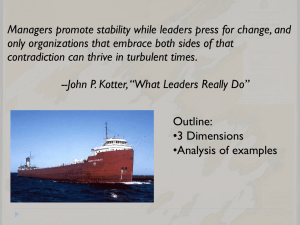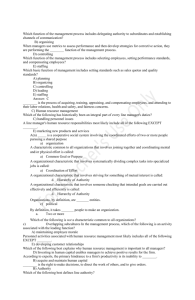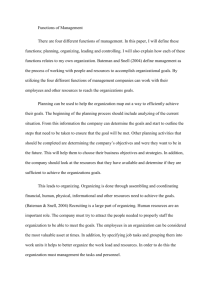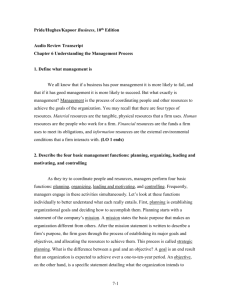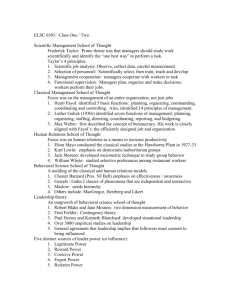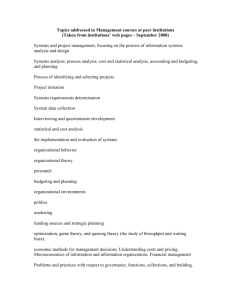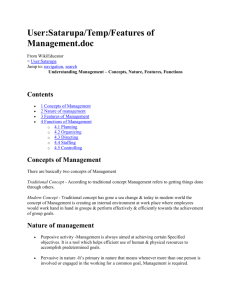What Leaders Really Do A common misconception about leadership
advertisement
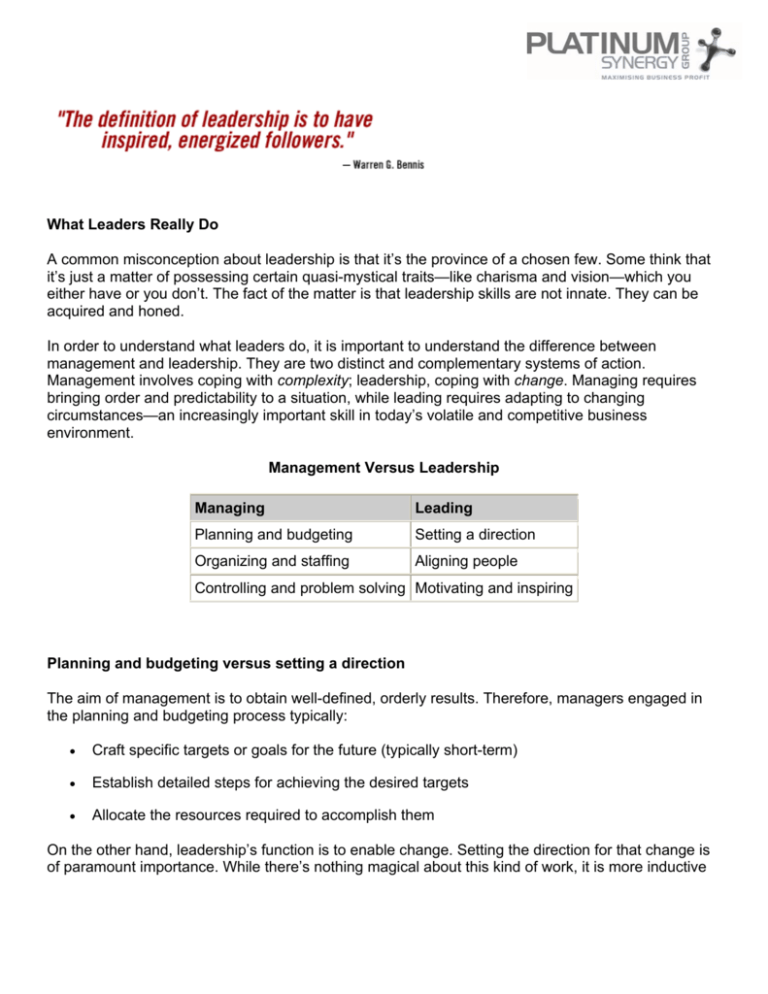
What Leaders Really Do A common misconception about leadership is that it’s the province of a chosen few. Some think that it’s just a matter of possessing certain quasi-mystical traits—like charisma and vision—which you either have or you don’t. The fact of the matter is that leadership skills are not innate. They can be acquired and honed. In order to understand what leaders do, it is important to understand the difference between management and leadership. They are two distinct and complementary systems of action. Management involves coping with complexity; leadership, coping with change. Managing requires bringing order and predictability to a situation, while leading requires adapting to changing circumstances—an increasingly important skill in today’s volatile and competitive business environment. Management Versus Leadership Managing Leading Planning and budgeting Setting a direction Organizing and staffing Aligning people Controlling and problem solving Motivating and inspiring Planning and budgeting versus setting a direction The aim of management is to obtain well-defined, orderly results. Therefore, managers engaged in the planning and budgeting process typically: • Craft specific targets or goals for the future (typically short-term) • Establish detailed steps for achieving the desired targets • Allocate the resources required to accomplish them On the other hand, leadership’s function is to enable change. Setting the direction for that change is of paramount importance. While there’s nothing magical about this kind of work, it is more inductive and intuitive than planning and budgeting, and does not result in detailed plans. Setting a direction for change requires leaders to: • Gather a range of data and look for patterns, relationship, and linkages • Develop a vision of the future (often the distant future) • Craft the strategies necessary for achieving that vision Organizing and staffing versus aligning people Organizing is a management process that, at its core, involves creating systems that enable people to implement plans as precisely and efficiently as possible. The processes of organizing and staffing require managers to: • Choose a job hierarchy and justify reporting relationships • Staff the positions with the appropriate people • Provide training for those who need it • Communicate plans to the workforce • Decide how much authority to delegate, and to whom The organizing and staffing processes critical to effective management illustrate the complex problem of designing a well-functioning system. However, its leadership counterpart, aligning people, is not a design issue, but rather a communications challenge. To align people to a vision, a leader must: • Solicit input and discussion from a wide range of people • Help people to comprehend a vision of an alternative future • Get them to believe in and become energized by this vision once it is understood While organizing people to fulfill a short-term plan is difficult, getting a large number of people from inside and outside the company first to believe in an alternative future, and then to take initiatives based on this shared vision, is often even more challenging. Controlling and problem solving versus motivating and inspiring Processes like controlling activities and solving problems are mechanisms managers put in place to make it easy for people to complete their daily jobs. Managers use these processes to: • Efficiently compare the behavior of the system they’ve organized and staffed with the original plan and budget • If the comparison reveals a divergence from the original course, take the corrective actions necessary to get the plan back on track The leadership processes of motivating and inspiring are quite different. Motivating and inspiring energizes people not by pushing or pulling them in the right direction, but by satisfying basic human needs for achievement—a sense of belonging, recognition, self-esteem, and having control over one’s life. Effective leaders motivate in a variety of ways. For example, they: • Articulate a vision in a manner that stresses the values of their audience • Involve people in deciding how to achieve the shared vision • Support employees’ efforts to realize the vision by providing coaching, feedback, and role modeling • Recognize and reward success Management skills are essential. But in response to an ever-changing economic and social marketplace, managers are increasingly being called upon to be leaders as well. As a result, the ability to lead—that is, identify a vision, align people to it, and motivate them to achieve it—has become even more critical for today’s managers
